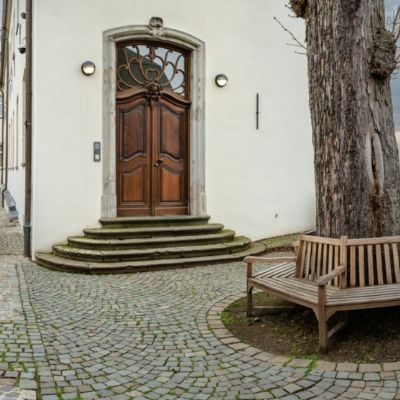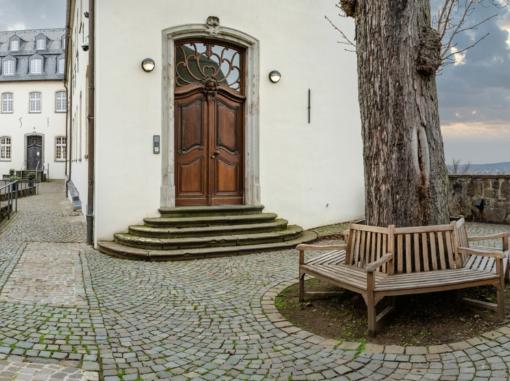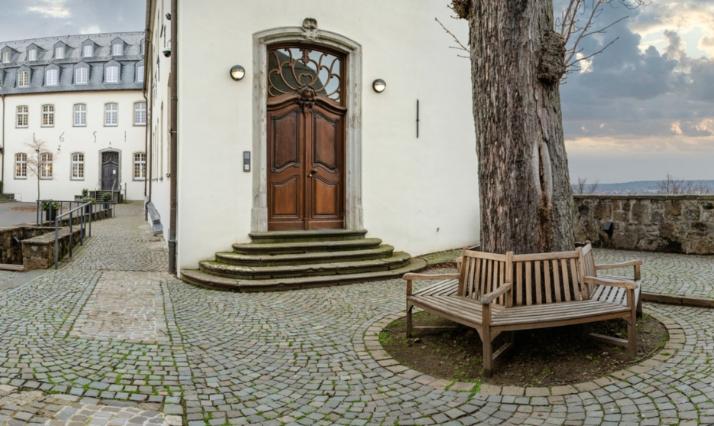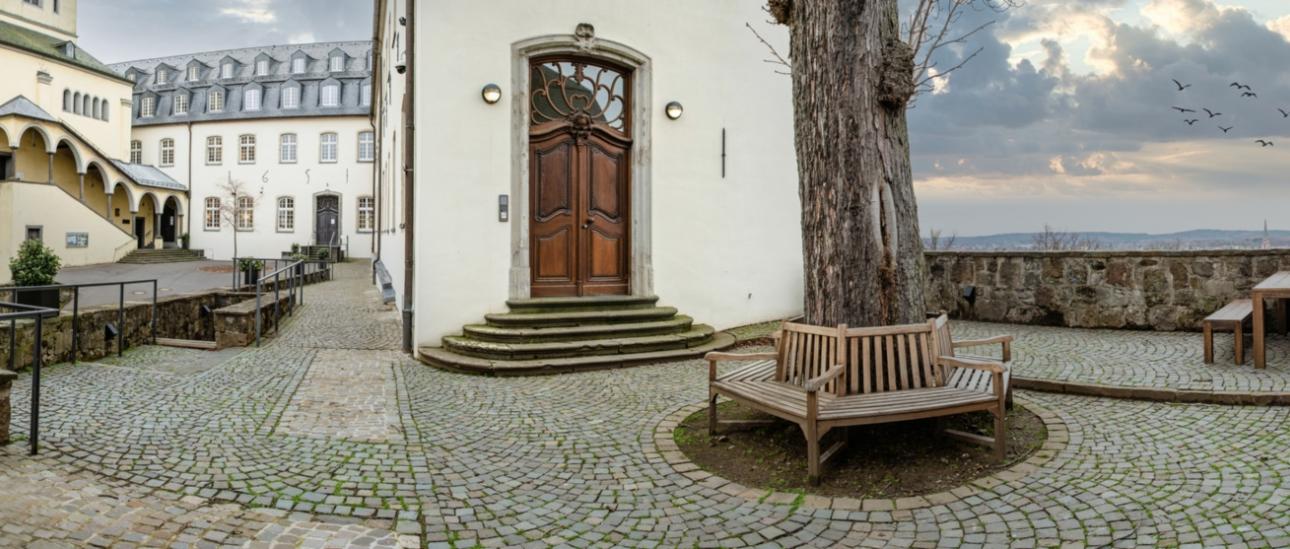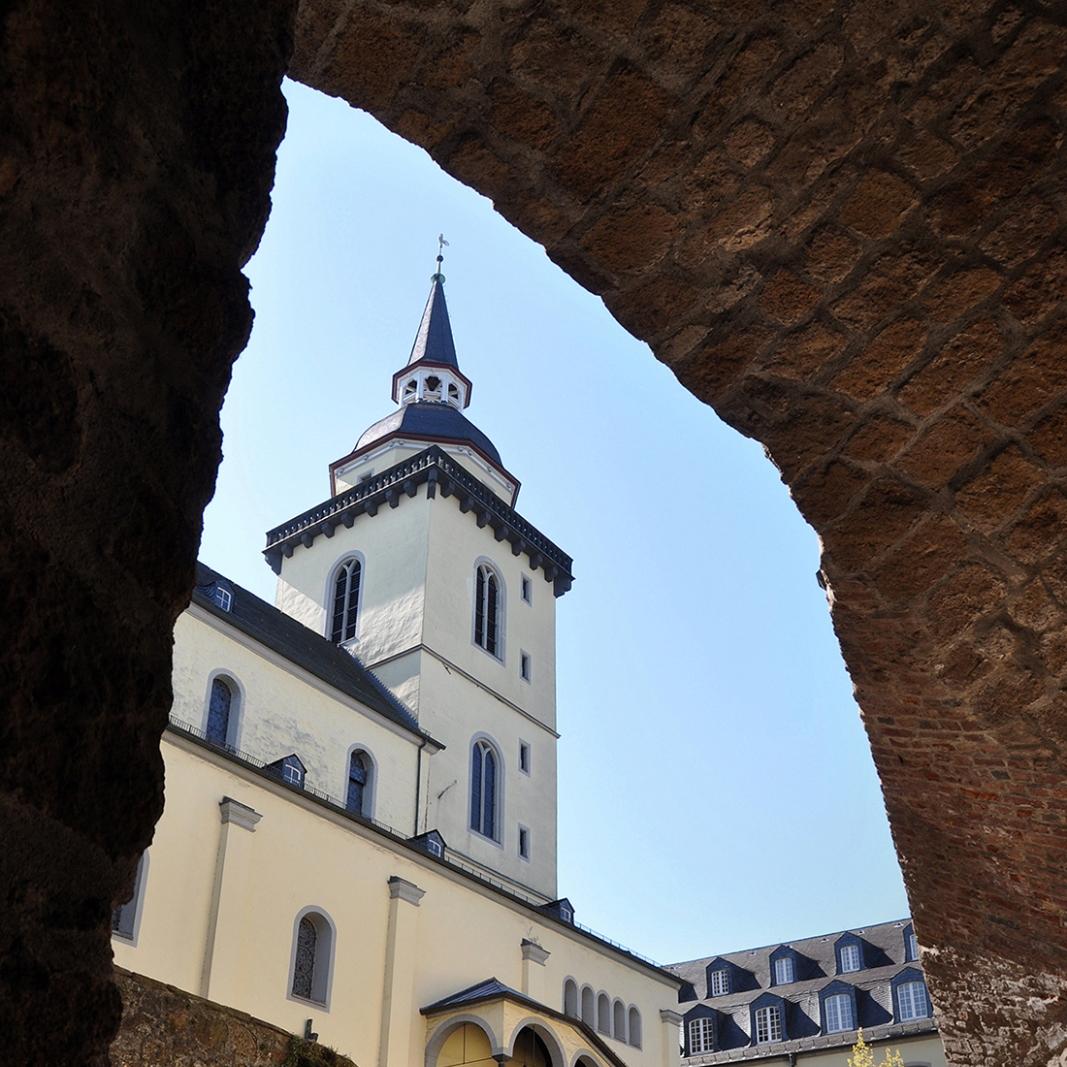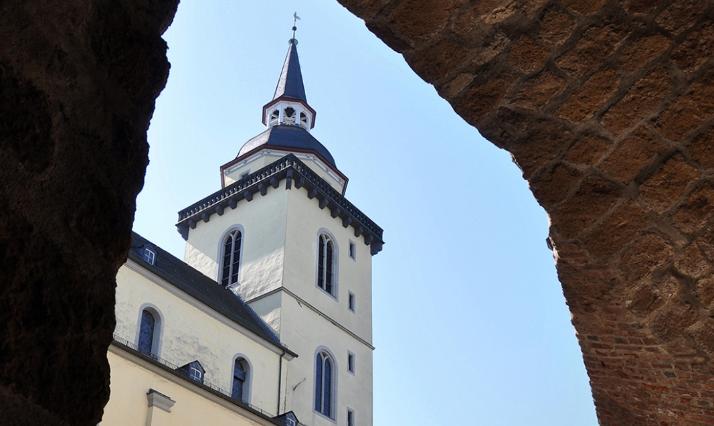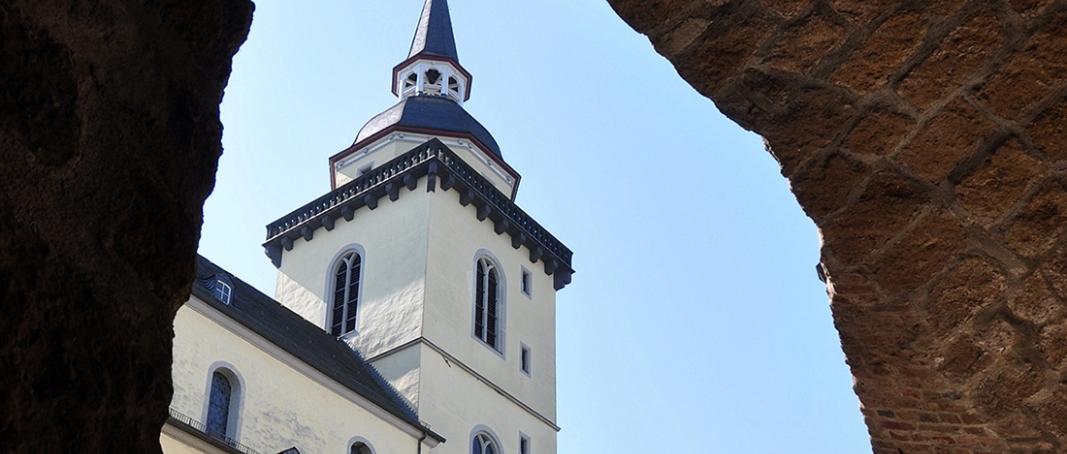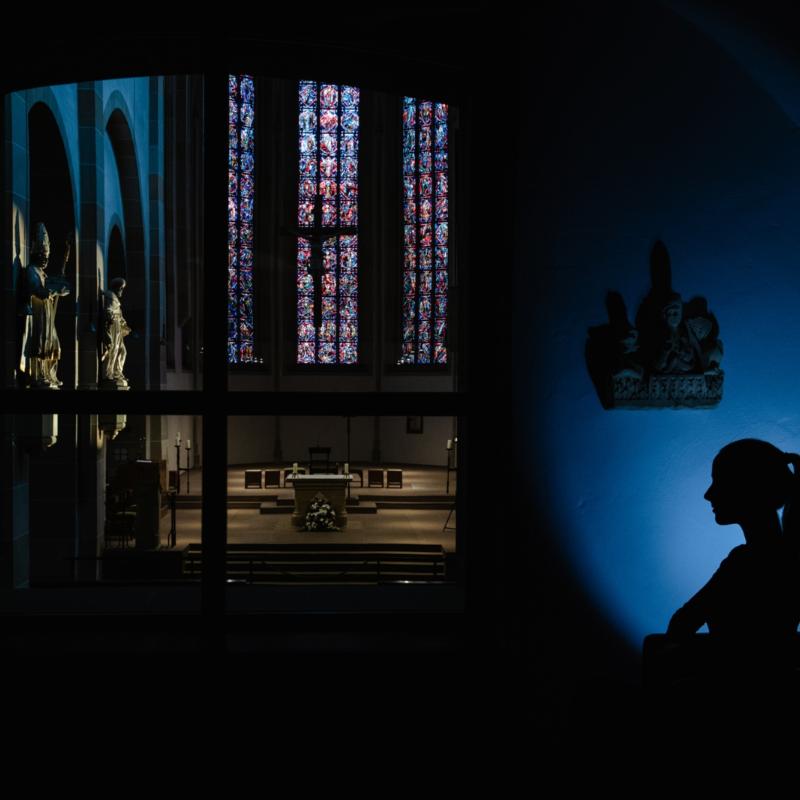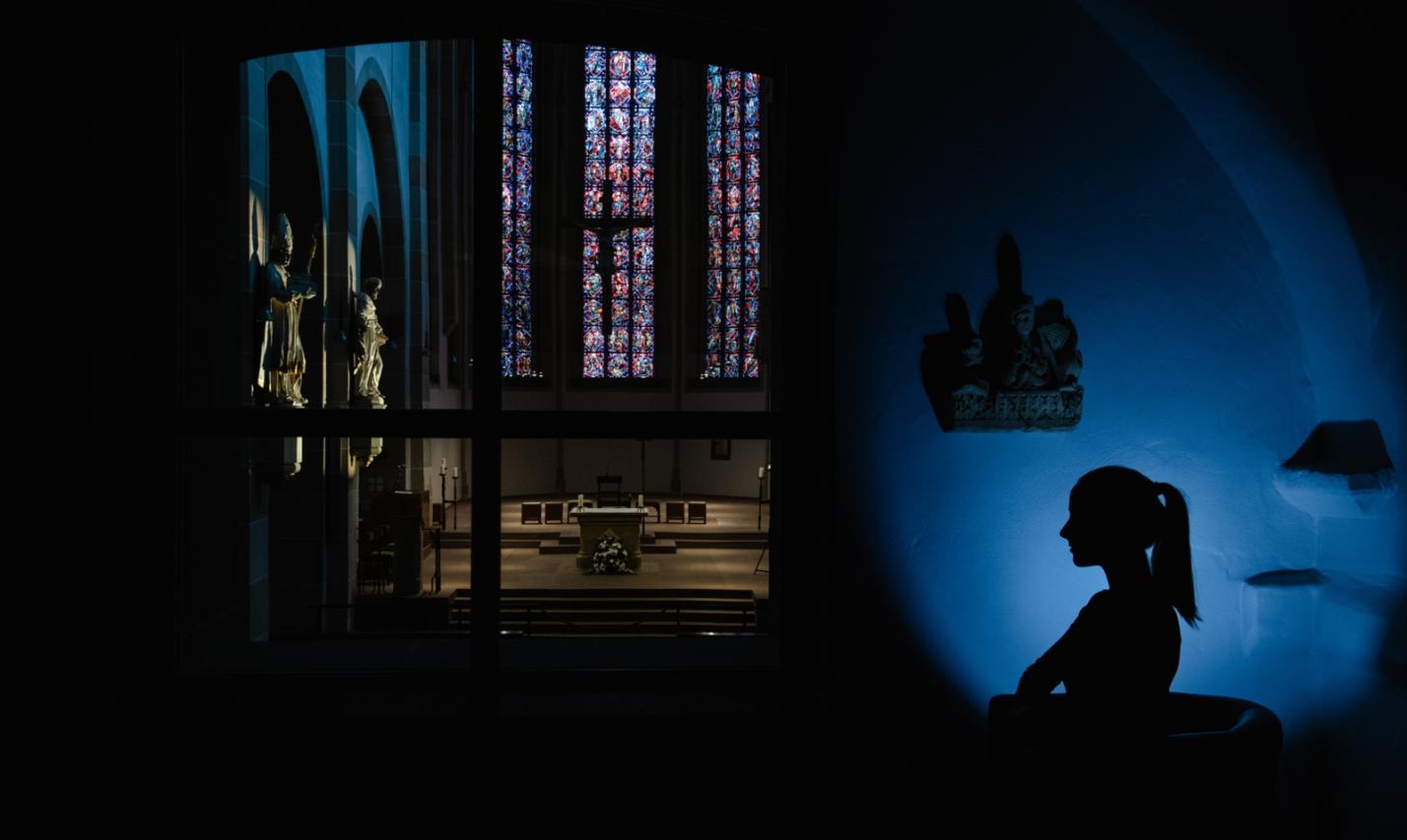Der im romanischen Stil erbauten dreischiffigen Basilika fehlte zunächst der heute so typische Westturm. Stattdessen verfügte das Gebäude über zwei Flankierungstürme seitlich der romanischen Chorapsis. Erst in einer Umbauphase im 12. Jahrhundert erhielt die Kirche den Turm, der dem Gebäude eine neue Abgrenzung nach Westen gab. Nach der Zerstörung des Chores während eines Aufstandes der Siegburger Bürger wurde der Bereich ab 1403 neu errichtet, diesmal in gotischer Bauweise.
1649 wurde die Kirche durch einen Brand zerstört, auf ihren Trümmern entstand ein dem Stil der Zeit entsprechender Barockbau. Geprägt wurde das Gebäude durch eine mächtige Vierung von gleicher Höhe wie das Langhaus. Diesem wurde durch die Abflachung der Spitzbögen des gotischen Chores ein einheitliches Niveau gegeben. Die großen Fenster in der Nord- und Südwand der Vierung machten das Gebäude eine helle und aufstrebende Leichtigkeit. Der Schmuck an den Säulen und Pfeilervorlagen war jedoch recht sparsam und nicht mit der prunkvollen Ausstattung des Barocks im süddeutschen Raum zu vergleichen.

